(September 5, 2024) Nestled in the southeastern Caribbean Sea, Barbados is an island country in the Lesser Antilles of the West Indies, next to North America. It’s one of the more populous and prosperous Caribbean islands. The story of Indian migration to Barbados began around 1910 with Bashart Ali Dewan from West Bengal, the first documented migrant from India to the island. Intrigued by this historical narrative, Indian-origin Sabir Nakhuda, a former journalist and author who grew up in Barbados, dedicated 15 years to researching and crafting his book – Bengal to Barbados: A 100 Year History of East Indians in Barbados. “It is a labour of love and a crucial mission to preserve the history of a community whose story needed to be told,” he remarks while connecting with Global Indian.
This year Sabir Nakhuda co-founded the Bengal to Barbados Foundation Inc. and Bengal to Barbados Digital Project with his friend Suleiman Bulbulia to highlight the distinctness and impact of East Indian-Bajan identity. The digital project, which is being co-curated by the Barbados Museum and Historical Society, weaves together migration stories from Bengal, Gujarat, Sindh, and South India with themes of cultural integration, heritage, and intergenerational experiences.
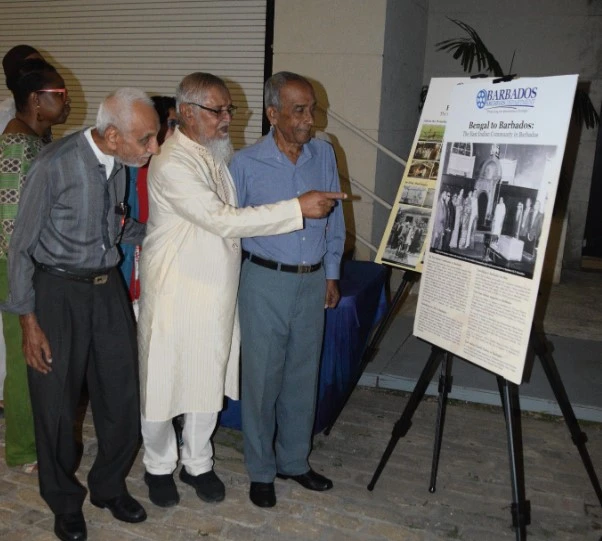
Sabir Nakhuda (centre) with Indian-origin people during the launch of Bengal to Barbados Foundation and digital project
Quest to revive Indian legacy in Barbados
In 1953 author Sabir Nakhuda’s father travelled from the village of Tadkeshwar in the Surat district of Gujarat to the distant Caribbean Island of Barbados for work. He was one of those Indian migrants from the region who were seeking better opportunities far from home. Five years later, in 1958, when Sabir was just ten years old, his father sent for him to join him in this new land. His mother and younger brother followed them in 1960, and the place became their new home.
“Growing up in Barbados, I navigated a unique cultural landscape, balancing my Indian roots with my new life in the Caribbean. I completed my primary and secondary education on the island, and later, pursued higher education in Canada. Fluent in Gujarati, Hindi, and Urdu, I always maintained a strong connection with my heritage, even as I adapted to my new environment,” Sabir tells.
It wasn’t until he began working at The Barbados Advocate, one of the oldest newspapers on the island, that he realised how little was known about the East Indian community in Barbados. He came across a few interviews from the 1950s with two elders from their community, which touched on their arrival in Barbados. But it quickly became apparent that there was so much more to uncover. “There were no documented records or any other accounts of our community’s history on the island. This realisation sparked a determination in me to dig deeper and document our story,” he remarks.
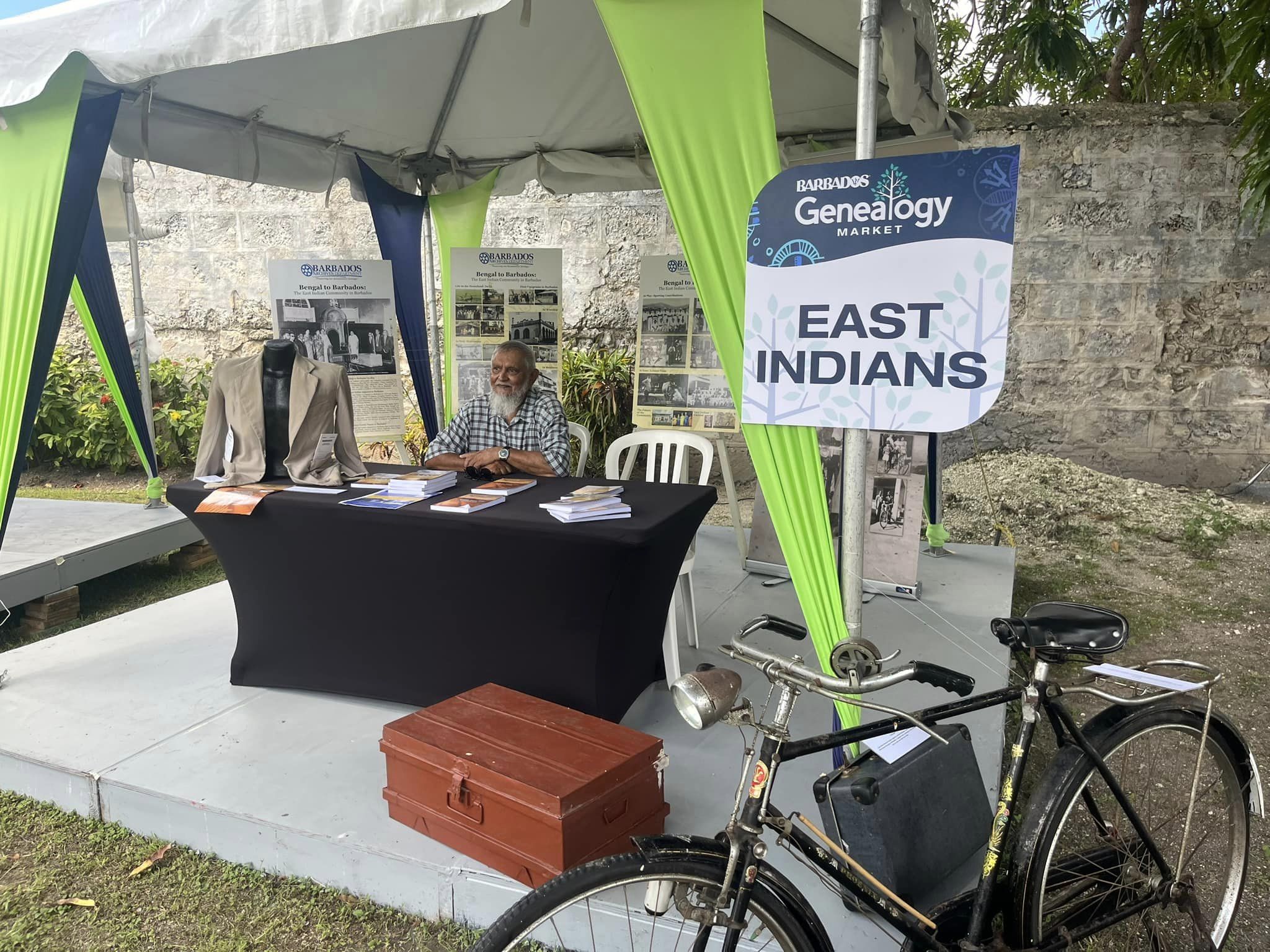
Sabir Nakhuda at the 2024 Genealogy Market, Barbados
With no written records to rely on, Sabir turned to oral history, visiting and interviewing various members of both the Barbadian and East Indian communities. He collected documents, photographs, and artefacts, piecing together the fragmented history of this often-overlooked group.
During my research, a particularly significant moment came when a family of early Bengali migrants shared an airmail letter with me. The sender’s address on the back of that letter led me to India, where I was determined to trace the roots of the first migrant who came to Barbados.
Sabir Nakhuda shares
In 1999, Sabir took a trip to India with a purpose – to find the first migrant from India who landed in Barbados. It was a journey that took him to the village of Jinpoor, where he found the descendants of the first migrant – Bashart Ali Dewan. It took him about two weeks to find the village of the first migrant.
“I interviewed his sons, other family members, and villagers, documenting their stories through pictures, videos, and recorded interviews. Often, my Bengali friends helped translate, ensuring that the rich history of these families was accurately captured. These recordings, now preserved in my hard drive, form a crucial part of the historical record I have worked to create,” he says.

Bashart Ali Dewan – first Indian migrant to Barbados | Photo Courtesy : Bengal to Barbados Foundation Inc
Keeping heritage and connections alive
Along with his research, Sabir Nakhuda has also collected various Indian artefacts, including old bicycles, jackets, relics, and photographs. These items, along with the history of the East Indian community, have been displayed in genealogy and archive exhibitions in collaboration with the Barbados Archives Department, where Sabir has been a contributor for many years.
“I also give lectures on the arrival of East Indians and their contributions to nation-building in Barbados, ensuring that our story is told and remembered,” tells Sabir who is enjoying an active retired life.
Due to his research that lasted 15 years, the author and former journalist has developed strong connections with the families of other Bengali migrants across various villages in West Bengal. “Although I am a Gujarati and not related to Bashart Ali and his family, I visit them and family members of other migrants spread across various villages in Bengal, whenever I travel to India.” he mentions.
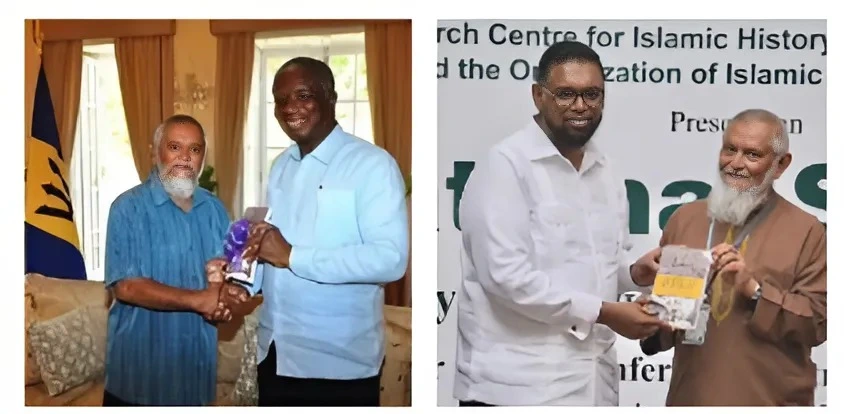
Sabir Nakhuda presented his book to Barbados PM Freundel Stuart in 2013 and President of Guyana, Mohammed Irfan Ali in 2023
Sabir Nakhuda has been to many parts of India dozens of times, and makes a point to visit his own uncles, aunts and extended family members in India, whenever possible.
One of my most cherished experiences was being invited to speak at the Visva-Bharati University at Shantiniketan in West Bengal in 2019, where I discussed the Indian diaspora in the Caribbean. I was elated to visit the place built by Rabindranath Tagore, as he is one of my favourite poets.
Sabir Nakhuda shares
In addition to his historical work, Sabir Nakhuda also writes poetry in English, Gujarati, and Urdu, and has continued his oral research, currently focusing on a book on the migration of Muslims from India to Barbados. “This upcoming work will detail the names of the villages from which Muslims have migrated, the history and pictures of these villages, and a chronology of every individual who came to Barbados from 1910 to 2023,” he says.
Creating legacy for future generations
The year 2016 was eventful both for Barbados as a nation and for Sabir Nakhuda as an author. It was the year when the nation celebrated 50 years of its independence. The same year, while attending the Commonwealth Prime Ministers meeting, Barbados’s PM Freundel Stuart presented Nakhuda’s book Bengal to Barbados to India’s PM, Modi. “PM Stuart later told me that he discussed the context of my book with PM Modi and highlighted the contributions East Indians have made in various fields of nation-building,” the author recalls. The foreword of the book was written by none other than PM Stuart himself.
During Barbados’s 50th anniversary of independence, the author was selected to serve on the committee organizing the celebrations. A time capsule was placed at the historic site of Independence Square in Bridgetown, the capital, where the Independence flag was first raised. Among the artifacts, two books were included: the autobiography of Sir Garfield Sobers, a former Barbadian cricketer who is considered Barbados’s national hero and the greatest all-rounder in the world, and Bengal to Barbados.
The time capsule is set to be opened on Barbados’s 100th anniversary in 2066. While I may not be around, my future generations will be, and most importantly, the legacy of the East Indian presence and our stories will resurface.
Nakhuda says with pride
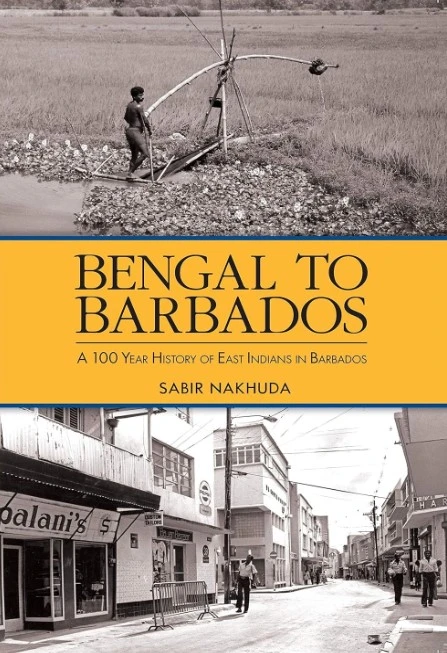
Cover Image of Sabir Nakhuda’s book
Connecting the dots
Sabir Nakhuda’s friend Suleiman Bulbulia’s interest in co-founding the Bengal to Barbados Foundation Inc. with him stems from the same deep commitment to preserve and promote the history and culture of the East Indian community in the Caribbean island nation. He even has a distant connection with the first documented Indian migrant to the country. “My paternal grandfather’s second wife was related to Bashart Ali Dewan, the first documented East Indian migrant to Barbados,” he says.
Born and raised in Barbados, Suleiman’s paternal and maternal grandfathers migrated from Kaphleta, Gujarat in the 1930s. With the Bengal to Barbados Foundation Inc. the retail senior manager by profession seeks to bridge cultural understanding and acceptance of Indian-origin people in the island nation.
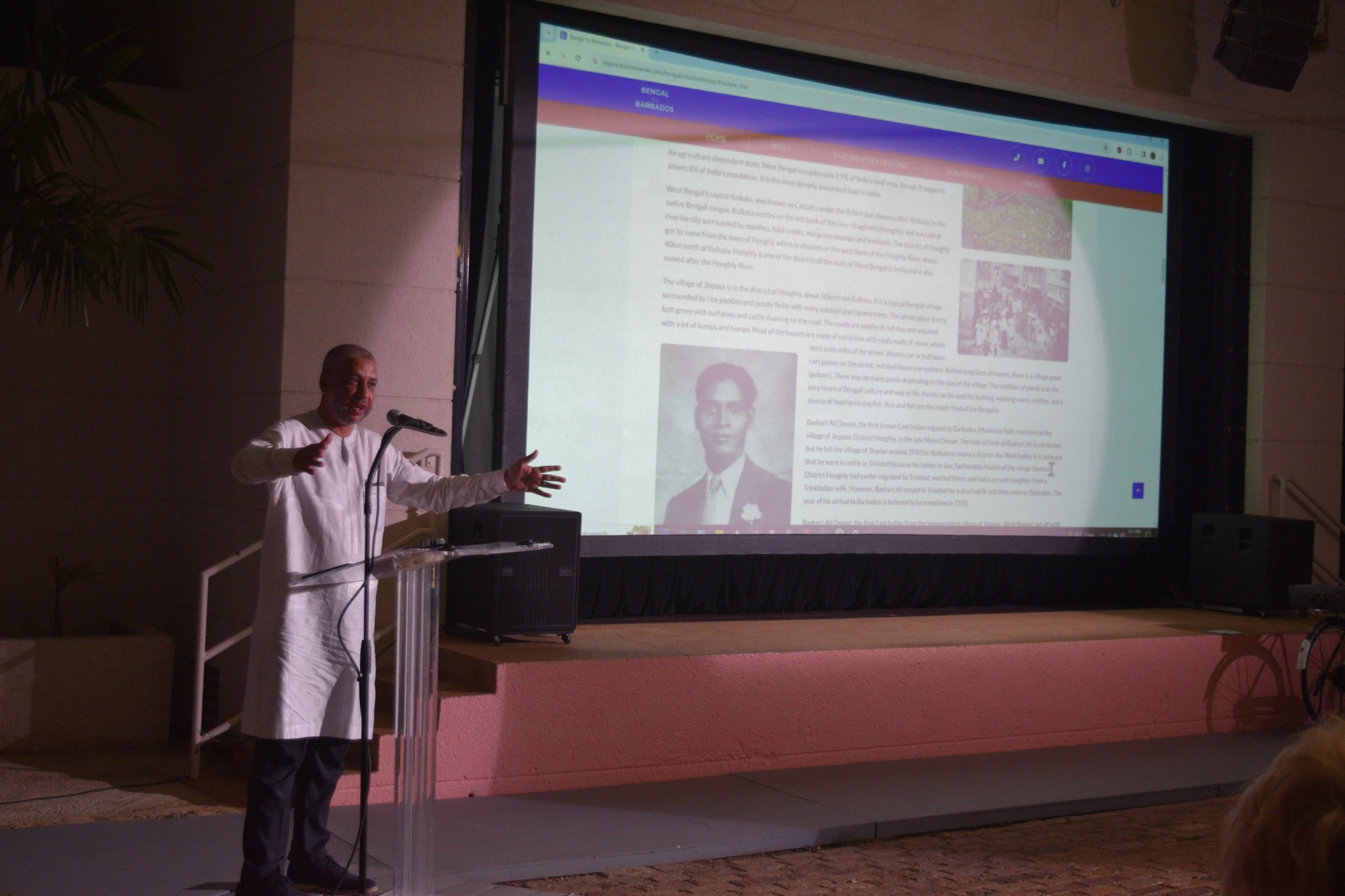
Suleiman Bulbulia during the launch of Bengal to Barbados Foundation and digital project
Both Sabir Nakhuda and Suleiman Bulbulia are dedicated to documenting the stories, history, and legacy of East Indians in Barbados. Their goal is to collect tangible, historic items from the Indian community to create a permanent display of these artefacts. Additionally, they aim to share the collected information through their website and social media platforms.
“Our efforts have centred around providing accurate historical information about the Indian community in Barbados while promoting their culture, knowledge, and heritage. These efforts have led to an understanding and acceptance of the Indian community among both the government and the general public in Barbados. Additionally, our work has strengthened the bonds of friendship between India and Barbados,” Suleiman signs off.
- Follow Sabir Nakhuda and Suleiman Bulbulia on Facebook
- To know more about Bengal to Barbados Digital Project, visit its website
Also Read: Why are Indians outperforming everybody else in the UK?




